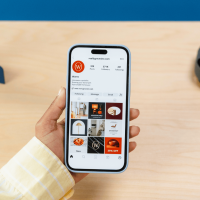Have you ever dreamed of speaking a new language fluently in just a few months? With the right approach, that dream is more achievable than you might think. Language learning doesn’t have to be a slow, tedious process. Whether you’re learning for work, travel, or personal growth, adopting the right strategies can dramatically accelerate your progress.
Here are 10 proven techniques that can help you learn a new language faster and more effectively—backed by science and used by successful language learners around the world.

1. Set Clear, Specific Language Goals
Before diving into vocabulary lists or grammar exercises, take a step back and define what success looks like for you. Do you want to hold a 10-minute conversation in French within three months? Or perhaps pass a proficiency exam like the JLPT or DELE?
Setting SMART goals—Specific, Measurable, Achievable, Relevant, and Time-bound—keeps your learning structured and helps you stay motivated as you track your progress.
2. Immerse Yourself in the Language Daily
Immersion is one of the most effective ways to absorb a language naturally. While moving to another country may not be realistic for everyone, there are plenty of ways to create a language-rich environment right at home.
Watch foreign films with subtitles, listen to music and podcasts in your target language, follow native speakers on social media, or change your phone’s language settings. The goal is to surround yourself with the language so your brain becomes familiar with its sounds, rhythms, and patterns.
3. Use Spaced Repetition to Boost Memory
Spaced repetition is a powerful technique to help you remember vocabulary long-term. Instead of cramming words in one sitting, SRS (Spaced Repetition Systems) present words just before you’re about to forget them—maximizing retention.
Apps like Anki or Quizlet use this method effectively and allow you to build your own flashcard decks or use pre-made ones.
4. Read and Listen to Contextual Content
Reading and listening are crucial for developing comprehension, especially when you’re exposed to vocabulary in context. Contextual learning deepens understanding and makes it easier to remember how and when to use certain expressions.
Pro Tip: Satori Reader for Japanese Learners
Satori Reader is an immersive Japanese reading platform designed to bridge the gap between textbook learning and native-level content. It offers a library of over 1,400 episodes across various story series, each enriched with native audio, contextual definitions, grammar explanations, and customizable text displays. Developed by the creators of Human Japanese, Satori Reader provides a personalized and engaging approach to mastering Japanese reading and listening skills.
Key Features:
- Richly Annotated Stories: Each story includes sentence-by-sentence translations, grammar notes, and cultural insights to deepen understanding.
- Adaptive Text Display: Customize the display of kanji, kana, and furigana based on your proficiency, allowing for a tailored reading experience.
- Contextual Definitions: Tap on any word to see its meaning in the specific context of the sentence, aiding in accurate comprehension.
- Integrated Audio: Listen to native voice actors narrate the stories, supporting both reading and listening practice.
- Smart Review System: Create personalized flashcards from new vocabulary encountered in stories, complete with example sentences and audio.
- Community Support: Engage with a supportive community and access expert guidance to enhance your learning journey.
5. Learn Through Real-Life Application
Try integrating the language into your real-world activities. Write your grocery list in your target language, follow a recipe from a local cuisine blog, or journal about your day using newly learned words.
The more you can link language to your personal experience, the more it will stick.
Pro Tip: WordUp for English Vocabulary Enhancement
WordUp is an AI-powered English vocabulary app designed to help learners improve their language skills through real-life context and data-driven word selection. It focuses on teaching the most useful words based on frequency and relevance, making vocabulary learning more practical and efficient.
Best Features
- Knowledge Map to identify and fill vocabulary gaps
- AI conversations with personal tutors and themed roleplays
- Exam-focused vocabulary support for tests like IELTS and TOEFL
- Multimedia examples using videos, images, and real-life contexts
- Spaced repetition and smart flashcards for better retention
- Personalized learning paths tailored to profession, interest, or language level
- Translations available in over 30 languages for global accessibility
6. Start Speaking from Day One
Many learners hesitate to speak until they feel “ready.” But the truth is, speaking from the very beginning helps build confidence and reinforces what you learn. Even simple phrases or scripted roleplays can be immensely beneficial.
Use platforms like Tandem, HelloTalk, or online tutors to practice conversations. If you’re shy, voice-based AI tools and shadowing exercises can help ease you in.
7. Focus on High-Frequency Vocabulary
Learning the most common 1,000–2,000 words in your target language will give you access to about 80% of daily conversations. Instead of spreading yourself thin across obscure vocabulary, prioritize the words you’ll hear and use most often.
Look for word frequency lists or apps that focus on core vocabulary relevant to your personal or professional interests.
8. Think in the Target Language
Shifting your inner monologue from your native language to your target language helps train your brain to become more fluent. Start small—describe what you’re doing, label objects around your home, or narrate your thoughts out loud.
This habit minimizes your reliance on translation and helps you build fluency faster.
9. Track Progress and Celebrate Milestones
It’s easy to get discouraged when you focus only on what you haven’t learned. Instead, track your wins—no matter how small.
Use a language journal, progress-tracking app, or even sticky notes on your wall. When you reach a milestone (like finishing your first book or holding a full conversation), celebrate it. Recognizing progress boosts motivation and reinforces your efforts.
10. Stay Consistent and Patient
Perhaps the most crucial tip: be consistent. You don’t need to study for hours each day—just aim for 15–30 minutes of focused practice daily. Language learning is a cumulative process, and momentum matters far more than intensity.
Even on busy days, squeeze in quick reviews or listen to audio during your commute. Over time, consistency will compound into real fluency.
Final Thoughts
Learning a new language doesn’t have to be slow or overwhelming. By applying these techniques—immersing yourself daily, setting smart goals, using apps like Satori Reader and WordUp, and staying consistent—you’ll find that fluency becomes less of a far-off dream and more of a reachable reality.
Start small, stay curious, and enjoy the process. Which of these techniques will you try first?

Founder Dinis Guarda
IntelligentHQ Your New Business Network.
IntelligentHQ is a Business network and an expert source for finance, capital markets and intelligence for thousands of global business professionals, startups, and companies.
We exist at the point of intersection between technology, social media, finance and innovation.
IntelligentHQ leverages innovation and scale of social digital technology, analytics, news, and distribution to create an unparalleled, full digital medium and social business networks spectrum.
IntelligentHQ is working hard, to become a trusted, and indispensable source of business news and analytics, within financial services and its associated supply chains and ecosystems










